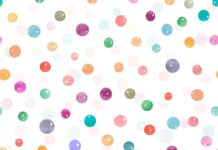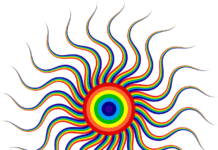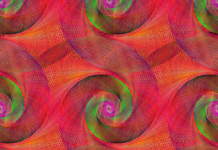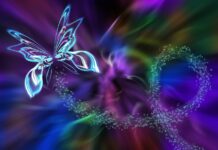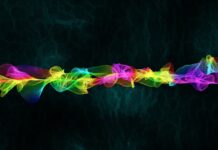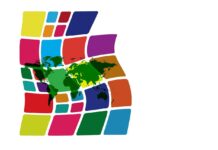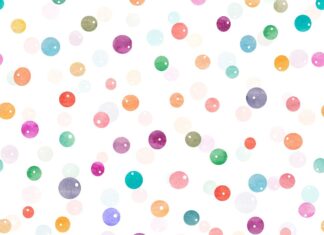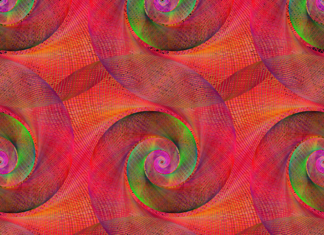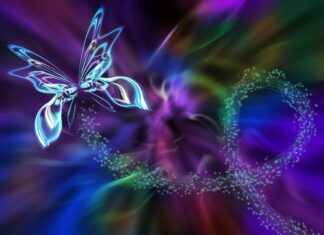The Deep Dream Generator is a revolutionary technology that allows us to visualize neural networks in a new and exciting way. It uses a technique called “deep dreaming,” which involves feeding an image into a neural network and then repeatedly modifying the image to amplify certain patterns within it. The result is a surreal, dream-like version of the original image, which can reveal hidden patterns and structures within the network. This technique has been used in a variety of applications, from art to science, and has captured the imagination of people all over the world.
Deep Dream Generator was first introduced in 2015 by Google’s Artificial Intelligence team. The idea was to create a tool that could visualize how a neural network “sees” an image. By tweaking the input image in different ways, they discovered that they could generate striking, hallucinogenic images that appeared to reveal the neural network’s inner workings. This technique was dubbed “deep dreaming,” and it quickly became a viral sensation.
The basic idea behind deep dreaming is simple. The neural network is essentially a mathematical function that takes an image as input and produces an output, which is a set of numbers that represent different features of the image. These features could include things like edges, textures, shapes, or colors. By tweaking the input image in various ways, we can alter the output of the neural network in predictable ways. For example, if we modify the input image to emphasize a certain type of edge, we can force the neural network to generate an image that contains more of that type of edge.
One of the key features of deep dreaming is that it operates at multiple scales simultaneously. This means that we can generate images that contain patterns at different levels of detail, from large-scale features like shapes and colors to small-scale details like textures and edges. This gives us a tremendous amount of creative control over the final image, allowing us to explore a vast range of possible visual outcomes.
There are several different tools and techniques that can be used to generate deep dream images. One of the most popular is the Deep Dream Generator website, which allows users to upload their own images and apply various deep dreaming filters to them. The website uses pre-trained neural networks that have been specifically designed to generate visually interesting images, and it provides a range of customization options that allow users to fine-tune the output to their liking.
Another popular tool for generating deep dream images is Google’s open-source DeepDream code, which allows users to run deep dreaming algorithms on their own computers. This code is more technical than the Deep Dream Generator website, and it requires some programming knowledge to use effectively. However, it also provides more advanced customization options and allows users to experiment with different types of neural networks.
The applications of deep dreaming are many and varied. In the world of art, deep dreaming has been used to generate stunning, psychedelic images that blur the boundaries between reality and fantasy. In science, deep dreaming has been used to visualize the inner workings of neural networks and to uncover patterns in complex datasets. It has even been used to create new kinds of music, by applying deep dreaming techniques to audio waveforms.
Overall, the Deep Dream Generator is an incredibly powerful tool that has the potential to transform the way we think about images, art, and data. By revealing the hidden patterns and structures within neural networks, it allows us to see the world in a new and exciting way, and to create new kinds of visual and auditory experiences. Whether you’re a scientist, an artist, or just someone who loves exploring the cutting edge of technology, the Deep Dream Generator is definitely worth checking out.
One of the most fascinating aspects of deep dreaming is its ability to reveal hidden patterns and structures within neural networks. By modifying an input image in different ways, we can force the neural network to generate images that emphasize certain features or patterns. These patterns could be anything from shapes and colors to textures and edges, and they can reveal important information about how the neural network processes visual information.
For example, deep dreaming has been used to visualize the internal representations of neural networks trained on object recognition tasks. By feeding an image of an object into the network and then generating a deep dream image, researchers can see which features of the object are being prioritized by the network. This can help us understand how the network is recognizing objects and what features it is using to make its decisions.
Deep dreaming has also been used in the field of neuroscience to study the way that the human brain processes visual information. By analyzing the deep dream images generated by neural networks, researchers can gain insights into how the brain might be processing visual information in a similar way. This could help us develop better models of how the brain works and could lead to new treatments for neurological disorders.
In addition to its scientific applications, deep dreaming has also had a huge impact on the world of art. Artists and designers have used deep dreaming to create stunning, otherworldly images that push the boundaries of our imagination. By applying deep dreaming algorithms to photographs and other images, artists can generate surreal, dream-like images that have a unique and haunting beauty.
One of the most exciting aspects of deep dreaming is its potential for creating new forms of art and expression. By using neural networks to generate images and other creative works, we can tap into the vast resources of the human imagination in new and exciting ways. This could lead to a new era of artistic innovation and creativity, as artists explore the possibilities of this groundbreaking technology.
Of course, deep dreaming is not without its limitations and drawbacks. One of the biggest challenges with deep dreaming is finding the right balance between creativity and control. Because deep dreaming is such a powerful and unpredictable technology, it can be difficult to predict the outcomes of different inputs and filters. This can lead to a lot of trial and error as artists and designers experiment with different techniques and approaches.
Another challenge with deep dreaming is its computational intensity. Generating deep dream images can require a lot of processing power, which can be a barrier for people who don’t have access to powerful computers or GPUs. This is particularly true for researchers and scientists who want to use deep dreaming to analyze large datasets or visualize complex neural networks.
Despite these challenges, deep dreaming remains one of the most exciting and promising technologies of our time. Whether we’re using it to explore the mysteries of the human brain, create stunning works of art, or uncover hidden patterns in complex datasets, deep dreaming is pushing the boundaries of what we thought was possible with artificial intelligence and machine learning. As we continue to develop new tools and techniques for working with deep dreaming, we can expect to see even more exciting and innovative applications in the years to come.
In conclusion, the Deep Dream Generator is a powerful and groundbreaking technology that has the potential to revolutionize the way we think about images, art, and data. By revealing hidden patterns and structures within neural networks, it allows us to see the world in a new and exciting way, and to create new kinds of visual and auditory experiences. Whether you’re a scientist, an artist, or just someone who loves exploring the cutting edge of technology, the Deep Dream Generator is definitely worth checking out. Its potential for transforming our understanding of artificial intelligence and machine learning is simply too great to ignore.



